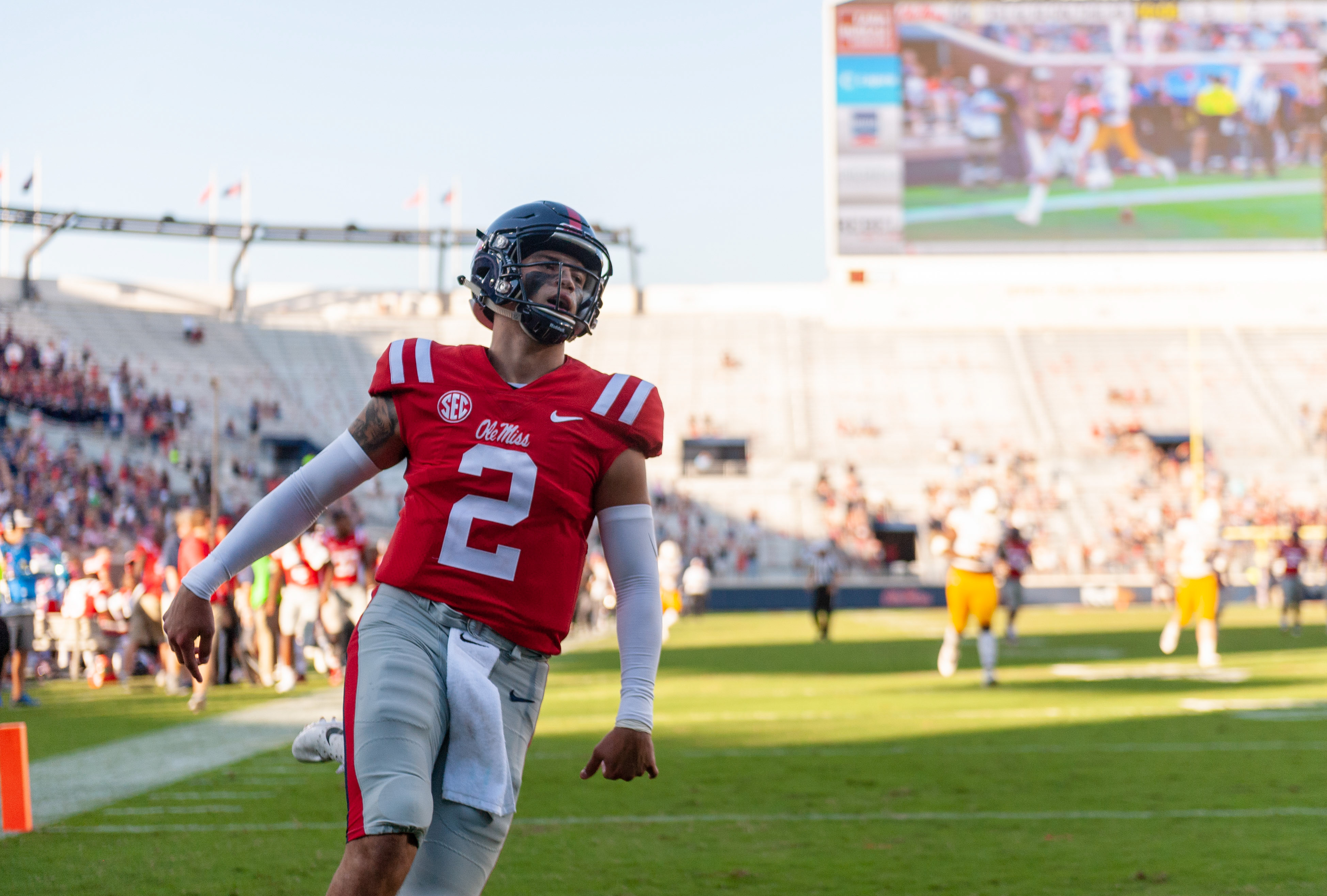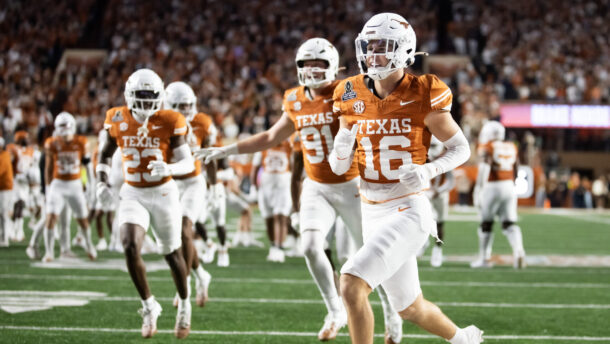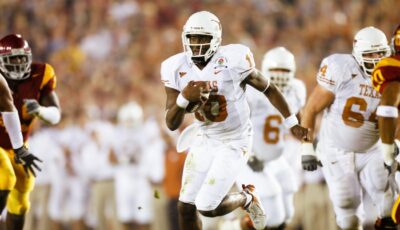
Editor’s note: After completing the SEC East, this is the sixth in a series previewing every SEC West team’s offense. Coming Sunday: Texas A&M.
You can be fairly certain that the Ole Miss offense in 2019 will be drastically different from the product we saw on the field last year – and that’s putting it as mildly as possible.
Not only is there a huge turnover in terms of personnel with 8 new starters, but there’s a new coordinator and playbook. And let me break some news: The offense isn’t just going to be “hey, run deep and I’ll throw it as far as I can” like it was last year.
Under new coordinator Rich Rodriguez, you can expect a much heavier emphasis on the rushing attack with more calculated and intricate passing concepts than what Rebels fans have grown accustomed to.
But will it be better? After all, that’s the bottom line, right?
Passing offense: Worse
The passing offense will be constructed around a bevy of new starters. QB Jordan Ta’amu (3,918 passing yards, 19 touchdowns) and receivers A.J. Brown (85 receptions, 1,320 yards, 6 TDs), D.K. Metcalf (26, 569, 5), DaMarkus Lodge (65, 877, 4) and Dawson Knox (15, 284) all off to the NFL. Replacing their production won’t be easy, but there’s reason for optimism.
Redshirt freshman QB Matt Corral officially became “The Guy” this spring, and based off what we saw in limited time last year (16-of-22, 239 yards, 2 touchdowns) and in the spring game (22 of 37, 240 yards, 1 touchdown), expectations are high for him to continue the trend of elite QB play. He shows impressive athleticism and natural arm talent, with the ability to throw from inside the pocket and on the move, showing good velocity and ball placement.
The personnel losses at receiver are a bigger hurdle to clear, but the Rebels have done a good job recruiting the position and there’s talent on-hand to replace the talent lost.
Junior receiver Braylon Sanders (16 receptions, 271 yards, 1 TD) has flashed game-breaking playmaking ability the past 2 years and will finally get his chance to be a No. 1 option. Sophomore Elijah Moore (36, 398, 2) filled in very well last year when the injury bug hit, and should benefit from a larger role in the new offense. Sophomore Tylan Knight was electrifying in the spring game and should be a huge weapon out of the slot.
I still expect the Rebels to feature a potent and effective passing attack this fall, but from a statistical standpoint, the passing offense will be worse than last year, simply because they’re not going to average 36.6 pass attempts per game this year.
Rushing offense: Better
The rushing attack was actually pretty solid last year thanks to a talented tailback and a veteran offensive line, and averaged 164.9 yards per game and 4.7 yards per carry. As is the case with the passing attack, however, there’s personnel losses to overcome, with All-American LT Greg Little (2nd-round draft pick), LG Javon Patterson (7th-round draft pick) and C Sean Rawlings all needing to be replaced – three guys with a combined 108 starts.
There’s no shortage of bodies to replace them, though, especially with 7 incoming freshmen from their 2019 recruiting class arriving on campus this summer. RG Ben Brown and RT Alex Givens return, two guys with futures of playing on Sundays, and former backups like Royce Newman, Bryce Matthews, Eli Johnson and Chandler Tuitt will now get their chance to work their way into the starting lineup.
The line is very much a work in progress, but it appears to be a flexible and versatile unit, and they benefit from the tutelage of respected line coach Jack Bicknell.
Unlike the hog mollies up front, there’s very little concern when it comes to the tailbacks. Senior Scottie Phillips (928 yards, 6.1 YPC, 12 touchdowns) returns, as does sophomore Isaiah Woullard (84, 428, 5.1, 4). Snoop Conner, a 2019 signee who enrolled early, looked decisive and powerful in the spring game and will likely see snaps this fall. And of course, all eyes will be on incoming 5-star Jerrion Ealy, who’s drop in the MLB Draft allowed Rebel fans to breathe a sigh of relief that they’ll get to see the blue-chipper on campus this fall.
The Rebels quietly have one of the best stables of tailbacks in the SEC, and they’re well suited for the zone-heavy run scheme favored by Rodriguez, who makes no secret of his desire to use the run to set up the pass. Assuming they can settle on their preferred lineup along the line and get them gelling, this should prove to be a lethal rushing attack.
Special teams: Better
This is based, of course, on the presumed development of returning starters Luke Logan (PK) and Mac Brown (P). Both players were solid last year, with Logan connecting on 22-of-27 FG attempts (45-of-46 on XP) and Brown averaging 41.3 yards per punt. Hopefully for the Rebels’ sake, Logan is attempting more XPs this fall than 20-39-yard attempts (23 last year) with improved play in the red zone.
Overall: Better
Ultimately, I think the passing attack will be effective and efficient this fall, though not as gaudy as last year. The rushing attack, assuming the offensive line comes together (and that’s not as easy as it might seem), could really blossom this year under Rodriguez.
Will the Rebels equal or surpass the obnoxious statistics they produced last year, when they averaged 33.9 points per game and 6.7 yards per play? Doubtful, but that’s a good thing for Matt Luke and the Rebels. Given that they’re still building up the defense, they need to do a better job of controlling the clock this year than they did last, even if it comes at a detriment to the advanced metrics of the offense.
A team’s offense and defense are tied together at the hip, and this year’s “O” should do a much better job of helping out the “D, which, ideally, leads to more “Ws.”
PREVIOUSLY IN BETTER/WORSE OFFENSE
Florida | Georgia| Kentucky | Missouri | South Carolina | Tennessee | Vanderbilt
Alabama | Arkansas | Auburn | LSU | Mississippi State
Rick Stavig, who played at Ole Miss and Shippensburg University, is the owner of SE Scouting. A veteran scout, he specializes in the NFL Draft and recruiting coverage.







